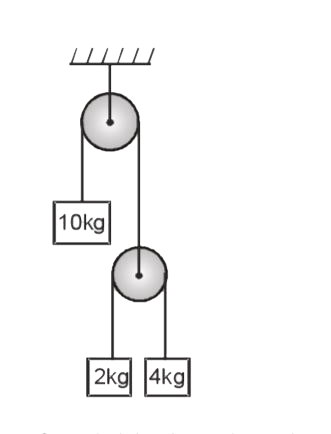In the figure find the velocity and acceleration of B, if instaneous velocity and acceleration of A are as shown in the Fig.
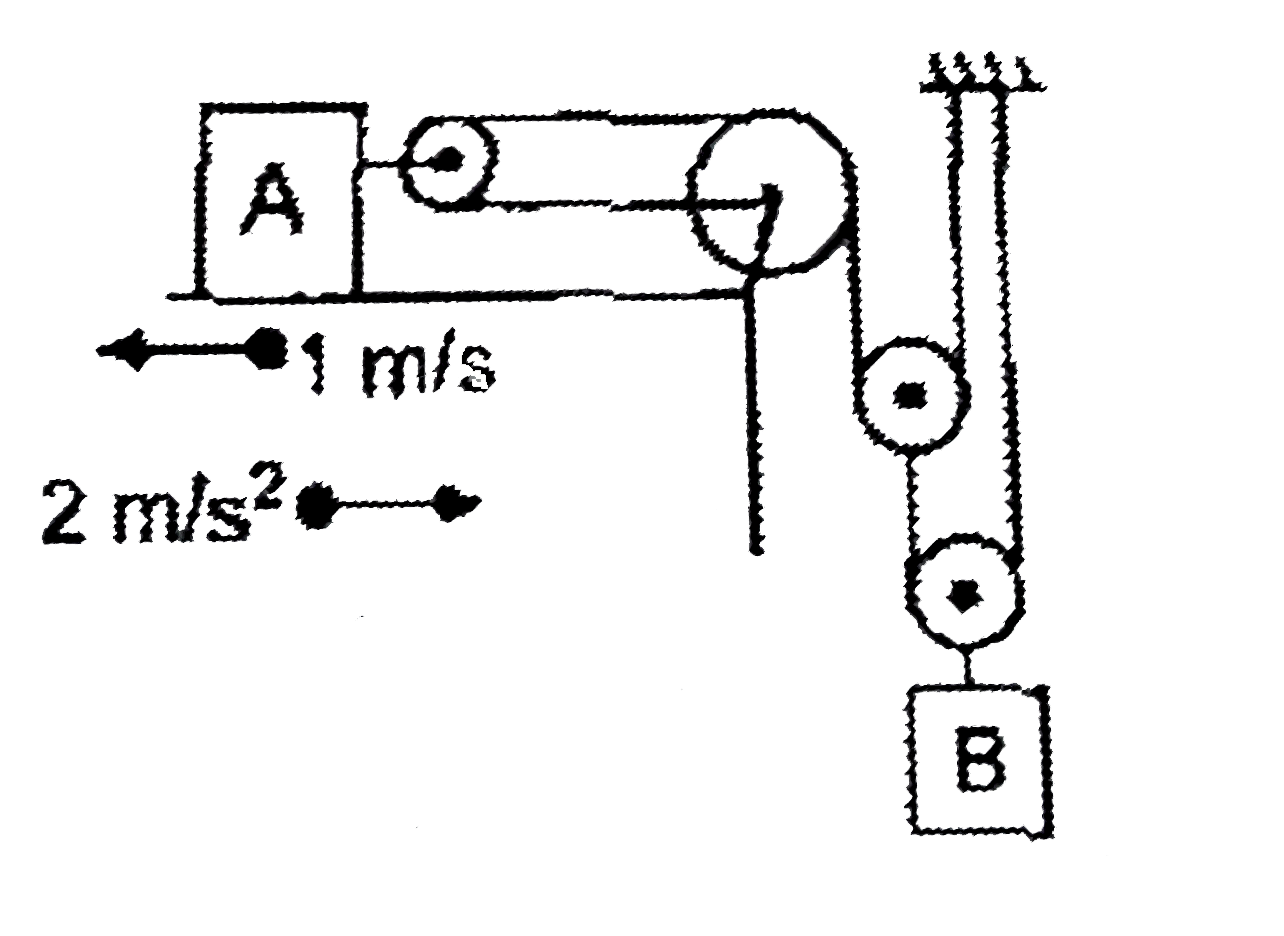
Step by step video & image solution for In the figure find the velocity and acceleration of B, if instaneous velocity and acceleration of A are as shown in the Fig. by Physics experts to help you in doubts & scoring excellent marks in Class 11 exams.
Topper's Solved these Questions
- BOOK - ANURAG MISHRACHAPTER - FORCE ANALYSISEXERCISE - level 1103videos
FORCE ANALYSIS
- BOOK - ANURAG MISHRACHAPTER - FORCE ANALYSISEXERCISE - Level-273videos
FORCE ANALYSIS
- BOOK - ANURAG MISHRACHAPTER - FORCE ANALYSISEXERCISE - Matching type13videos
FORCE ANALYSIS
- BOOK - ANURAG MISHRACHAPTER - DESCRIPTION OF MOTIONEXERCISE - Level-334videos
DESCRIPTION OF MOTION
- BOOK - ANURAG MISHRACHAPTER - IMPULSE AND MOMENTUMEXERCISE - matching3videos
IMPULSE AND MOMENTUM
Similar Questions
Knowledge Check
- Question 1 - Select One or More
A wheel is rolling on a horizontal plane. At a certain instant it has a velocity v and acceleration a of CM as shown in figure . Acceleration of
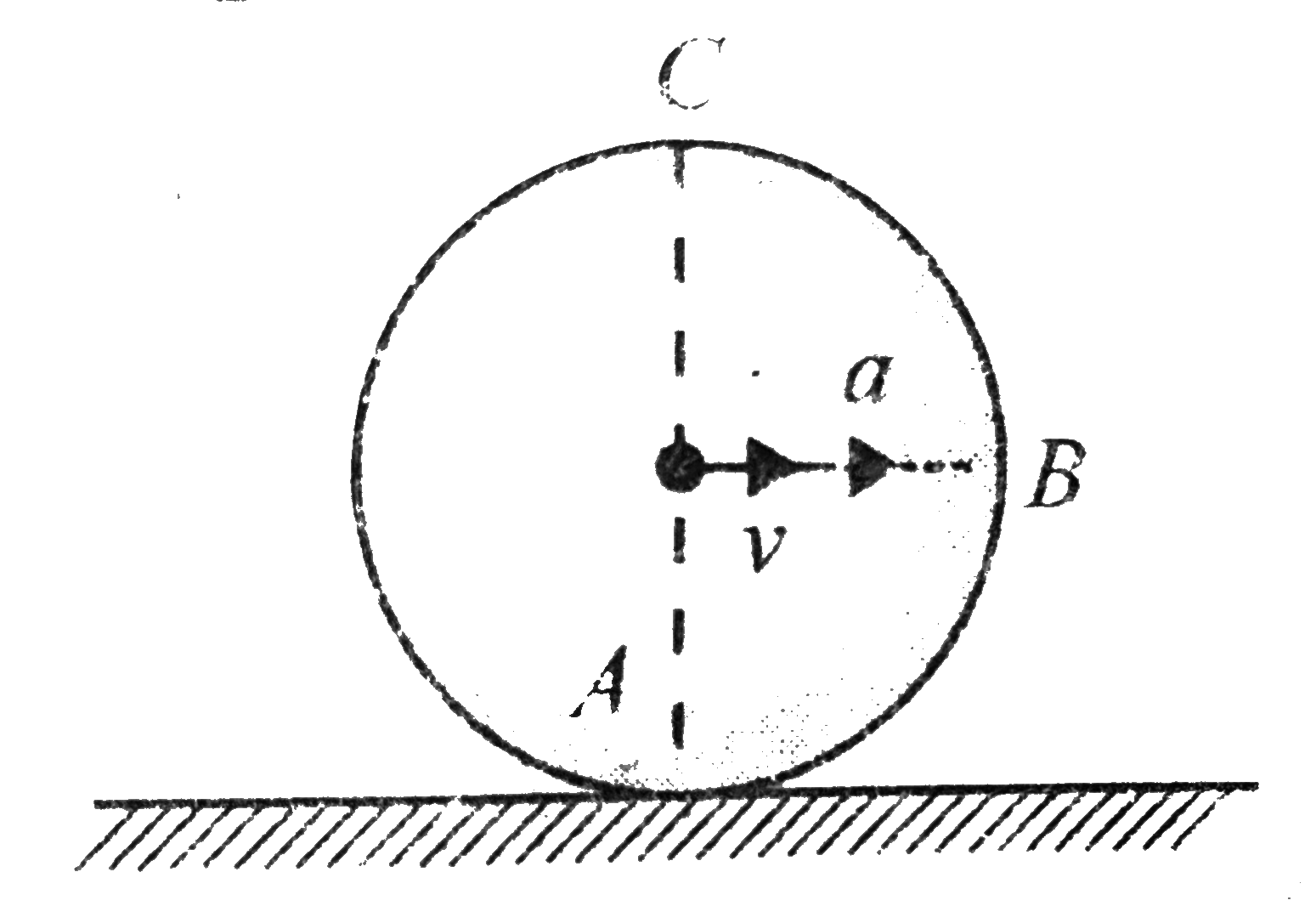 AA is vertically upwardsBB may be vertically down-wardsCC cannot be horizontalDsome point on the rim may he horizontal leftwards
AA is vertically upwardsBB may be vertically down-wardsCC cannot be horizontalDsome point on the rim may he horizontal leftwards - Question 2 - Select One
The particle is performing uniform circular motion, the true statement/s/are/is
(A) the direction of linear velocity, acceleration and force changes instantaneously
(B) the magnitude of linear velocity, acceleration and force instantaneously.
(C) the magnitude of linear velocity, acceleration and force remains constant.
(D) linear velocity, acceleration and force are in the same directionAA and DBA and CCB,C and DDA,B and C - Question 3 - Select One
In the arrangement shown in figure, if the acceleration of B is ¯a , then find the acceleration of A
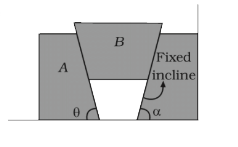 Aa sin αBa cot θCa tan θDa (sin α cot θ + cos α)
Aa sin αBa cot θCa tan θDa (sin α cot θ + cos α)
Find the relation in the accelerations of the three masses shown in fig.
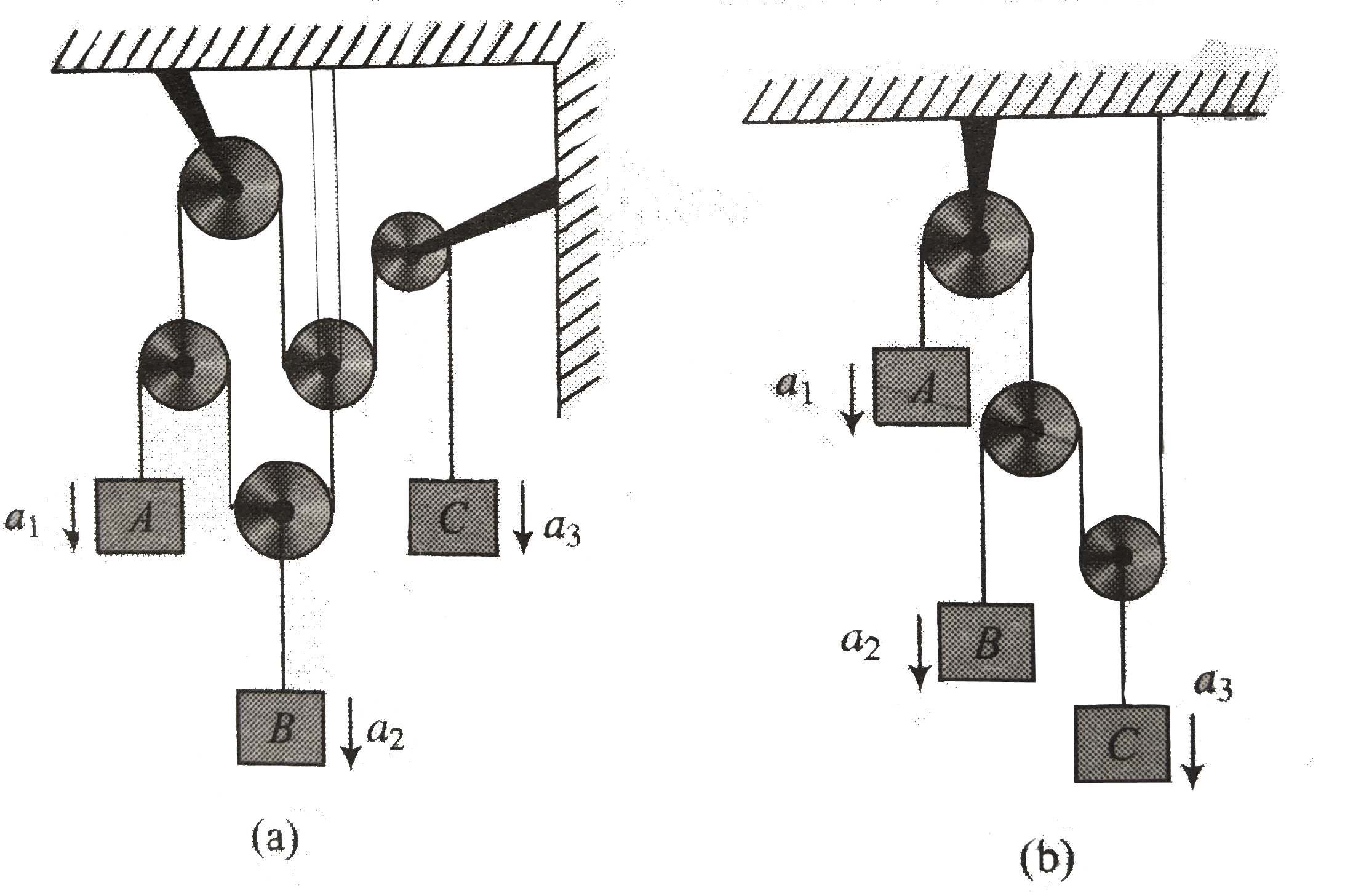 View Solution
View SolutionIn the Fig. shown find relation between acceleration of wedge 1 and 2
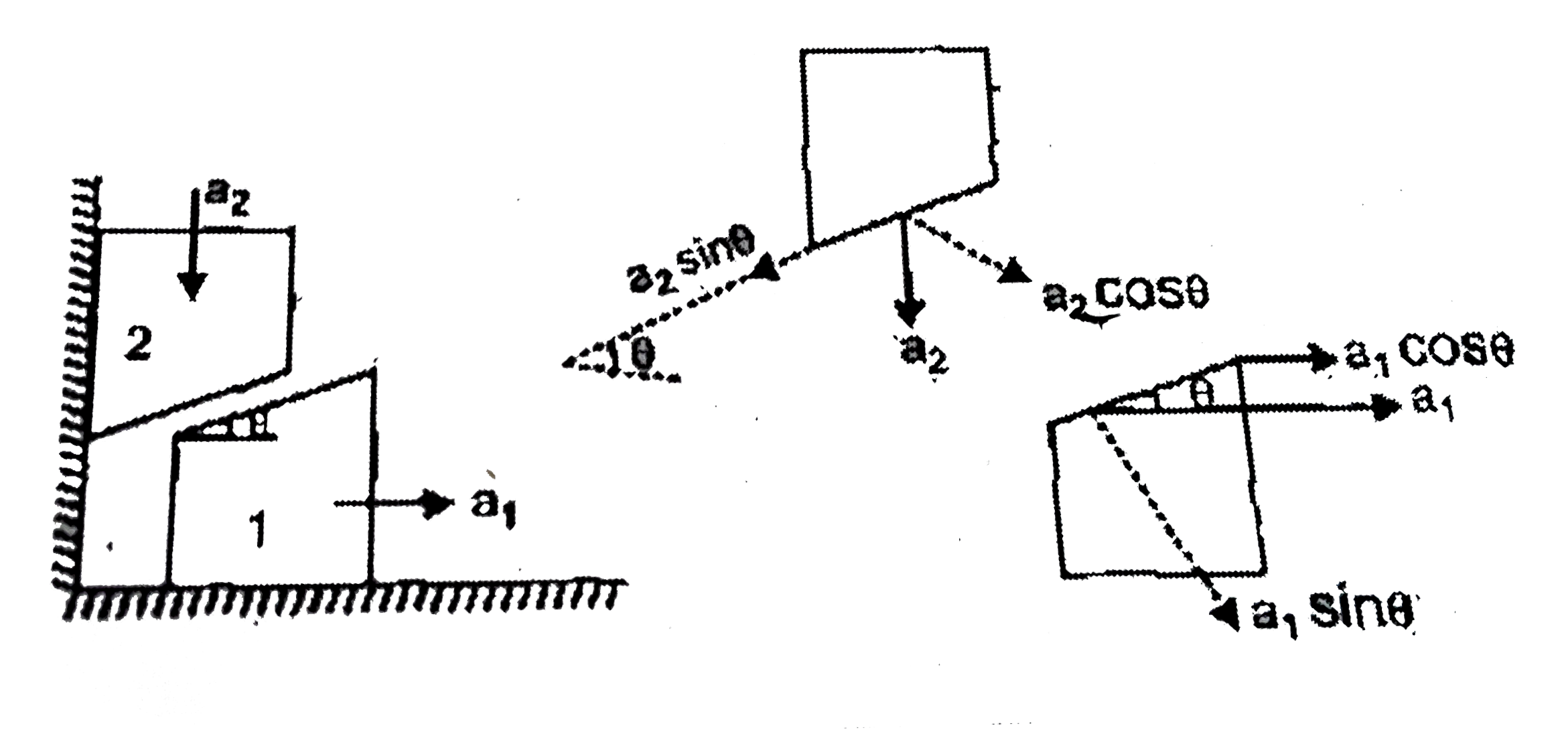 View Solution
View SolutionFor any particle moving with some velocity (→v) & acceleration (→a), tangential acceleration & normal acceleration are defined as follows.
Tangential acceleration - The component of acceleration in the direction of velocity.
Normal acceleration - The component of acceleration in the direction perpendicular to velocity.
If at a given instant, velocity & acceleration of a particle are given by .
→c=4ˆi+3ˆj
vaca=10ˆi+15ˆj+20ˆk
Find the tangential acceleration of the particle at the given instant :-View SolutionFor any particle moving with some velocity (→v) & acceleration (→a), tangential acceleration & normal acceleration are defined as follows.
Tangential acceleration - The component of acceleration in the direction of velocity.
Normal acceleration - The component of acceleration in the direction perpendicular to velocity.
If at a given instant, velocity & acceleration of a particle are given by .
→c=4ˆi+3ˆj
→a=10ˆi+15ˆj+20ˆk
Find the normal acceleration of the particles at the given instant :-View SolutionIn the arrangement shown in fig., if the acceleration of B is →a. Then find the acceleration of A.
 View Solution
View Solution


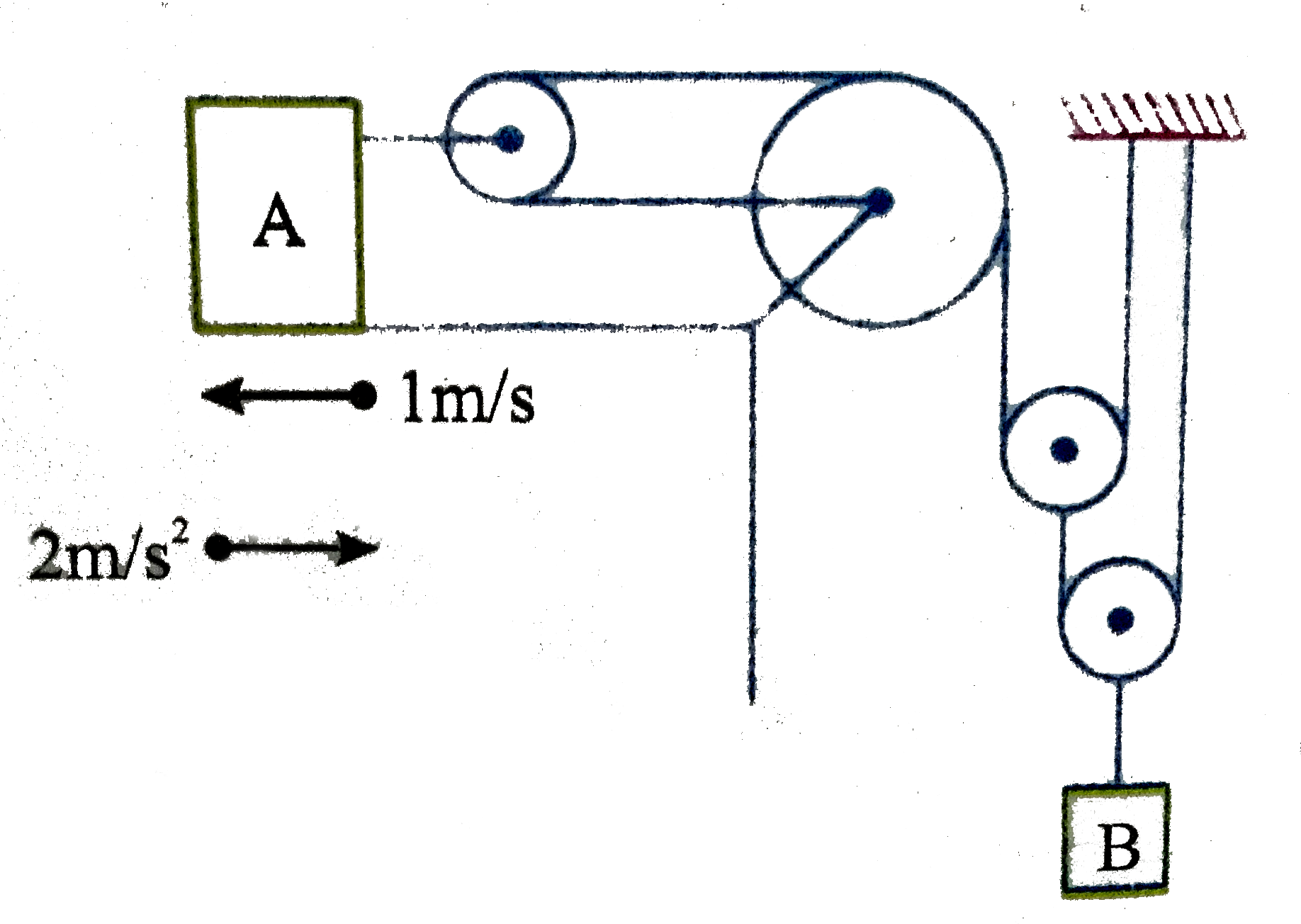 .
.